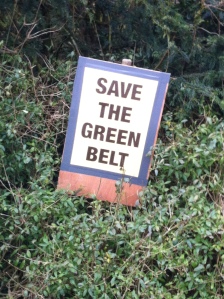Three recent reports about London seem in my mind to be linked.
First a report from the Trust for London reveals a widening gap between rich and poor across the country but more so in London than any other region. This is clearly being driven by rising housing costs, with house prices increasing by 20% last year. Second, a survey from the GLA finds that housing and the cost of living are the issues that most concern Londoners. 87% of respondents believe more housing is needed in London and 65% want more homes in their local area. When asked what the solutions were to London’s housing crisis, four measures came out neck and neck – supporting home ownership for first time buyers, making sure landlords act fairly, improving the quality of existing social housing and building new homes. Given that housing and the cost of living are inextricably linked (the cost of living crisis is a housing crisis) then housing is way out in front as the main issue affecting Londoners. Compare this to a recent IPSOS MORI poll for Britain as a whole which puts housing as 8th in the list and you can see that London is another country in housing terms.
The third report highlights one of the factors that contributes to London’s housing crisis but is barely on the radar of most Londoners – the Metropolitan Green Belt. A report from London First lays bare the s tupidity of this outdated planning policy, which is helping to strangle the life out of the capital.
tupidity of this outdated planning policy, which is helping to strangle the life out of the capital.
London’s Green Belt, at 514,000 hectares is over three times the size of Greater London (158,000 ha) and stretches from Southend to the South Downs and from Milton Keynes to Tunbridge Wells. It comprises 3.7% of England’s footprint. Over a fifth (22 percent) of Greater London’s area is Green Belt – that’s 35,000 hectares, (and there’s a further 65,000 hectares of Green Belt sitting within the M25).
Of this 35,000 hectares, only one quarter has any environmental or public access value. The rest is shared between a range of uses including agriculture, pony paddocks, catteries, scrapyards and golf courses. A great deal of this land is unproductive or unloved (places like this, for example) and could easily become attractive places to live, creating homes and new country parks that would open up new green spaces for Londoners. In fact, 2,500 hectares, or 7.1% of the green Belt within London is devoted to golf courses, an area twice the size of the Borough of Kensington and Chelsea.
Two boroughs, Havering and Bromley, are made up of more than 50% Green Belt.
The report also makes clear that the original purpose of green belts was dis
torted and perverted by the countryside lobby. The orginal vision was for a narrow belt of accessible parkland, as in Vienna’s Ringstrasse, but Conservative Minister Duncan Sandys in 1955 decided upon the present set-up, simply as a means of stopping the growth of London, or “sprawl” in the twisted language of the countryside lobby. The notion that a Green Belt should stop growth in its tracks is ahistorical and is the planning equivalent of the ancient Chinese practice of footbinding – stupid, cruel and pointless. London has just reached its highest ever population and yet its municipal footprint was created in 1965, so Londoners are now being hemmed in at unprecedented densities. I can’t help thinking that incidents like this, this and this are by-products of this densification policy, as Londoners fight for ever-diminishing scraps of personal space.
The London First report makes it clear that parts of the Green Belt could contribute to meeting London’s housing needs, particularly those close to existing transport hubs. No one is talking of building on vast swathes of Green Belt land, but providing new homes on just 10% of the 100,000 hectares within the M25 could yield at least 300,000 homes. To put this into perspective, London needs to build 50,000 homes a year (current output is hovering around 20,000), so this would proviide a significant number of new homes, on top of any brownfield development. Sadly, Boris Johnson has ruled out building on Green Belt until at least 2025 saying brownfield sites should provide sufficient land for development. It won’t and I can’t help thinking that his mayoralty will be looked back upon as a disaster for Londoners, due to his tragic inability to plan strategically for London’s growth.
(First published at Inside Housing 9th March 2015)